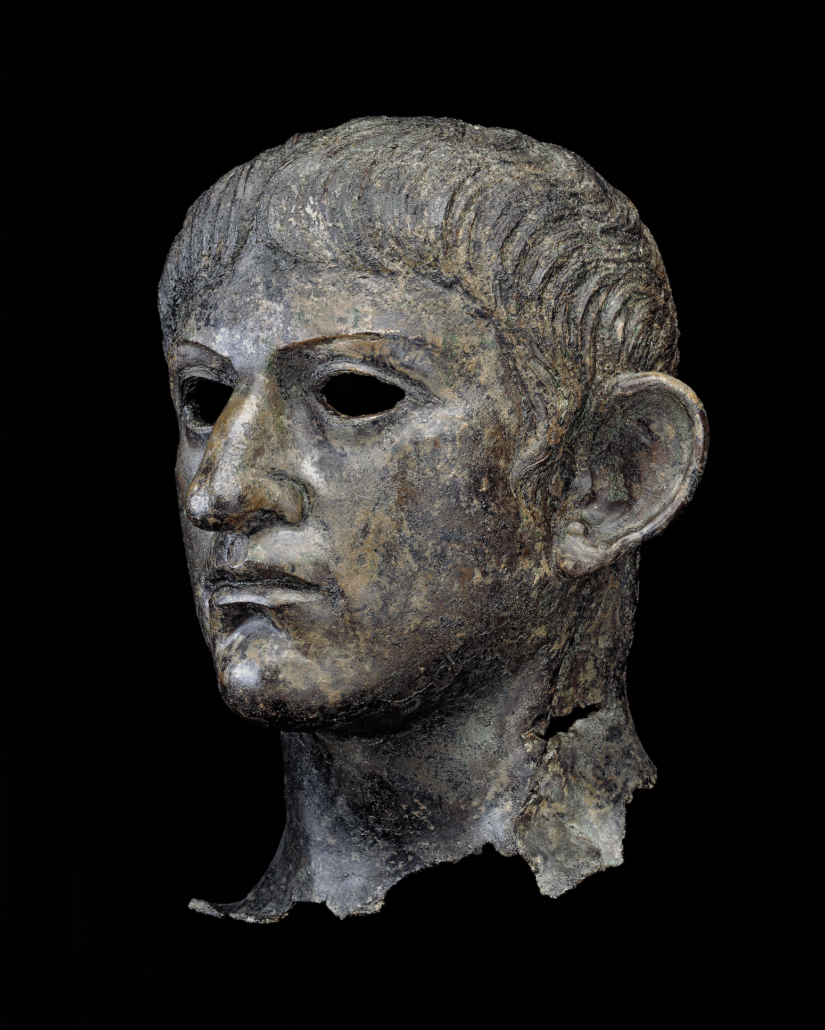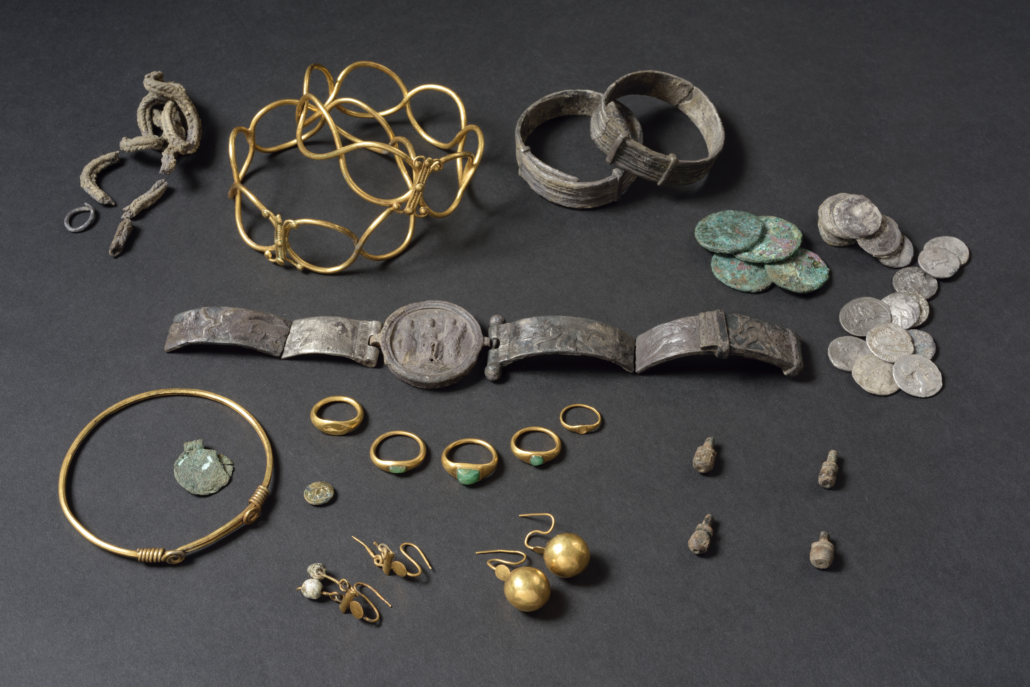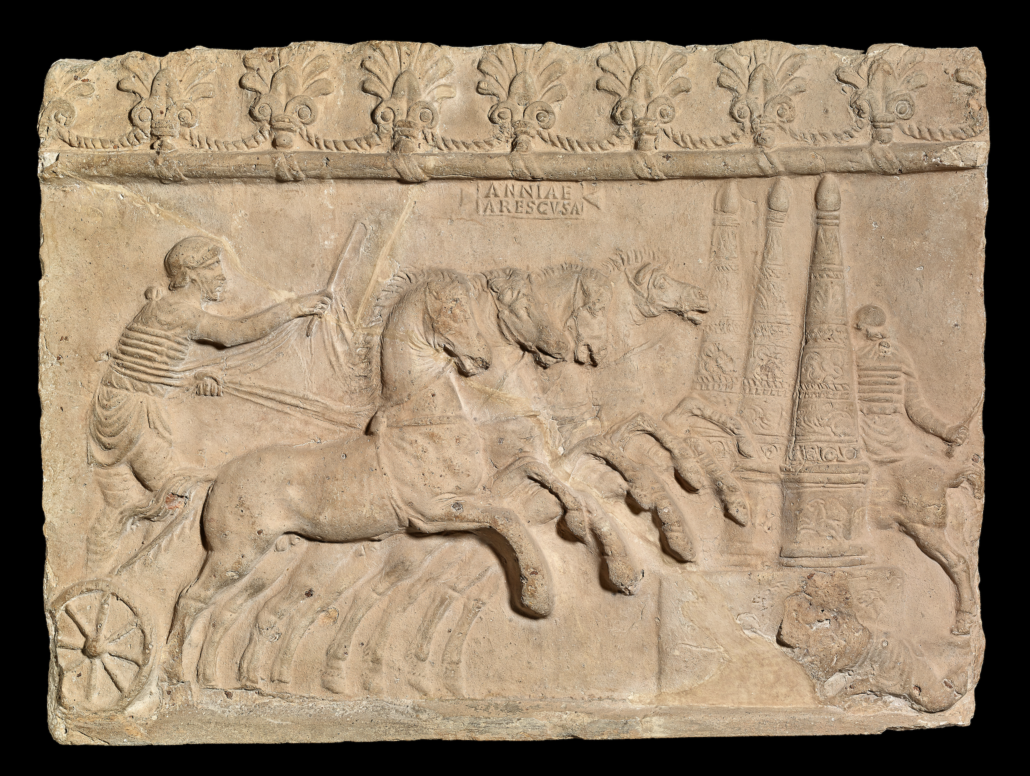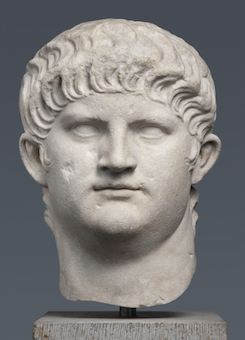
LONDON – Nero: The Man Behind the Myth explores the true story of Rome’s fifth emperor, informed by new research and archaeological evidence from the time, and challenging the biased historical accounts written after Nero’s death that have shaped his legacy. The exhibit opened on May 27 in the Sainsbury Exhibitions Gallery at the British Museum, and continues to October 24.
Recent discoveries relating to Nero’s 14-year rule reveal a more accurate picture. Treasures hidden during the destruction of Colchester in the years 60-61 during Boudica’s Iceni rebellion, burned artifacts from the Fire of Rome in the year 64, and evidence from the destruction of Pompeii uncover a new understanding of Nero’s turbulent and misconceived reign.
This major exhibition features more than 200 objects, charting the young emperor’s rise to power and examining his actions during a period of profound social change in regions from Armenia in the Near East, to Britain, and across mainland Europe. Drawn from the British Museum’s world-class collection alongside loans from Europe, most never seen in the UK before, the exhibition includes humble graffiti next to grand sculpture, precious manuscripts, objects destroyed in the fire of Rome, priceless jewelry, and slave chains from Wales, telling the story of rich and poor alike.

Nero (54–68), the last male descendant of Rome’s first emperor Augustus, succeeded to the throne at the age of 16; Britain had been under Roman rule for just 11 years. During Nero’s reign of nearly 14 years, he had his own mother killed, his first wife, and, allegedly, his second wife. Written accounts even claim that Nero himself started the Great Fire of Rome in the year 64. In June of 68, when confronted with rebellions by insubordinate military officials, Nero was forced to commit suicide. The Roman senate immediately excised his memory from official records, and his name was vilified to legitimize the new ruling elite.
The image of Nero as a tyrant, created 50 years after his death by the historians Tacitus and Suetonius, and written about more than another century later by Cassius Dio, is a story that has been repeated for centuries. We now know that this Nero is a fabrication, and that ancient sources stand between us and the historical character. This exhibition challenges traditional preconceptions and explores what the ancient elite narrative on Nero tells us about the inner conflicts of Roman society.
Statues of Nero were erected throughout the empire, yet very few survive due to the official suppression of his image. A star piece in the exhibition is a bronze head of Nero, long mistaken as Claudius, which was found in the River Alde in Suffolk in 1907. The head was part of a statue that probably stood in Camulodunum, now known as Colchester, before being torn down during the Boudica-led rebellion. A small bronze figure of Nero, lent by Museo Archeologico Nazionale di Venezia and seen in the UK for the first time, gives a sense of a complete sculpture.

The Fenwick Hoard is another highlight of the exhibition, discovered in 2014 beneath the floor of a shop on Colchester’s High Street. The treasure was buried for safekeeping by settlers fleeing for their lives during Boudica’s attack. Among the items are Roman republican and imperial coins, military armlets, and fashionable jewelry similar to finds from Pompeii and Herculaneum.
Famously, Nero was the first Roman emperor to act on stage and compete in public games as a charioteer. At the age of 21, Nero first took to the stage as part of a series of private games, but a few years later he performed publicly in Naples and then in Rome itself. This event was described in hostile sources as unprecedented and scandalous, but contemporary evidence shows that Nero was hardly the first young man of good family to take part in public performances. Chariot racing, gladiatorial combats, and theater were incredibly popular in the Roman world, as shown by fascinating objects such as gladiatorial weapons from Pompeii on loan from the Louvre, and stunning frescoes depicting actors and theatrical masks lent by Museo Archeologico Nazionale di Napoli.

One of the defining moments of Nero’s reign was the Great Fire of Rome in the year 64, which burned for nine days and laid waste to large parts of the city. Excavations in recent years have revealed the true extent of the ferocity and impact of the fire. A warped iron window grating, discovered near the Circus Maximus, is displayed in the UK for the first time, as testament to the intensity of the flames and destruction.
Nero, who was in the nearby city of Antium rather than in his palace watching the inferno, led the relief and reconstruction efforts. A new palace, the Domus Aurea, rose from the ashes. Stunning frescoes and wall decorations will give visitors a taste of Nero’s opulent residence. The elaborate designs and the use of precious materials such as exotic marbles, cinnabar, and gold speak to the height of imperial luxury.
Visitors will ask themselves, who was Nero? A young ruler reconciling contrasting demands in a time of great change, or a merciless, matricidal maniac? Nero was widely admired among ordinary Romans due to his popular policies, extravagant games, and grand building projects, in stark contrast to the powerful voices of the senatorial authors who ultimately determined Nero’s legacy. It is they who fabricated the enduring image of the mad tyrant that still fascinates us today.
Thorsten Opper, Curator, Ancient Rome, British Museum, said, “The Nero of our common imagination is an entirely artificial figure, carefully crafted 2,000 years ago. It is fascinating to unravel how and why this was done. The exhibition – from court art to street graffiti – reveals a society that was prosperous and dynamic, yet full of inner tensions, which erupted in a violent civil war after Nero’s death. The objects tell these stories, starkly and immediately.”
Hartwig Fischer, Director of the British Museum, said “Nero: The Man Behind the Myth is the first major exhibition in the UK to look beyond the commonly held view of Nero as the emperor who fiddled while Rome burned. The exhibition’s representation of Nero is one that resonates with our times, in a world with deepening social and economic challenges, contested facts, and the polarization of opinion.”
Visit the website for the British Museum and its page on its exhibit Nero: The Man Behind the Myth.



